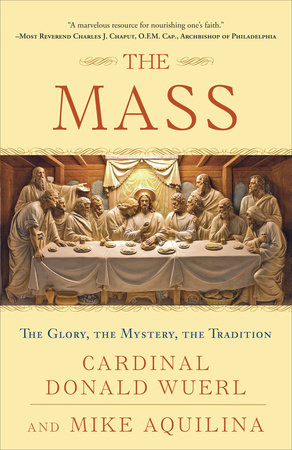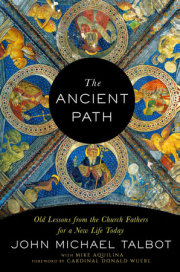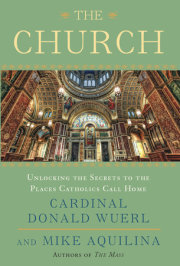Introduction
The Mass Is What We DoThe Mass is what Catholics do. It’s the heart of Catholic life, for individuals and for the community.
A Catholic may fill up hours with devotional prayers and volunteer service, public witness, and almsgiving.
A parish may sponsor a school and a soup kitchen, a scouting troop and several Bible study groups.
The Mass, however, is the heart that gives life to all of it. Our tradition describes the Mass beautifully as “the source and summit of the whole Christian life.” Catholicism means many things to the world. It has inspired the art and architecture of the great masters. Our sanctuaries have echoed with masterworks of music. Our saints have served the poorest of the poor. Yet all these things we trace back to a single source: the Mass.
Catholics think of the Mass as synonymous with the parish church. Whether we say “I went to church” or “I went to Mass,” we mean the same thing. Even if we do many other things at our church, the Mass is what the building was made for. To “go to church” is to go to Mass. This is true for every Catholic. When the pope travels to distant lands, the news media pay close attention— and the world watches as he simply does what Catholics do: he celebrates
Mass, sometimes for a congregation of hundreds of thousands of people.
Yet such a large-scale event is no greater than the usual Mass in an ordinary parish. It is the same, in its essence, as
a Mass that a military chaplain offers on the hood of a Jeep during a lull in a battle.
The Mass is the most familiar and recognizable element of the Catholic faith; and still it is also the most enigmatic. In the Mass we see postures, gestures, and items of clothing that would seem out of place anywhere else. We hear words that hint at deep and ancient mysteries. Even the more familiar words sometimes mean something quite different
from their meaning in ordinary usage.
The words, the vestments, and the gestures of the Mass took their origins in times long past. Nevertheless, they hold infinite meaning for Catholics today. For we believe that the Son of God took flesh and became man in a particular time and place, and that he used the language and culture of that time and place to convey truths that speak to every age and nation. Jesus insisted on this point; and so, “on the night he was handed over, took bread, and, after he had given thanks, broke it and said, ‘This is my body that is for you. Do this in remembrance of me.’ In the same way also the cup, after supper, saying, ‘This cup is the new covenant in my blood. Do this, as often as you drink it, in remembrance of me.’ For as often as you eat this bread and drink the cup, you proclaim the death of the Lord until he comes” (1 Corinthians 11:23–26).
He said, “Do this,” and so
this — the Mass — is what we Catholics do.
We find the experience more rewarding, however, when we understand the Mass as we pray it. And that’s the reason
for this book.
In the chapters that follow, we’ll look at all the elements that go together to make up a typical Mass. We’ll define some basic terms. We’ll outline the parts of the ritual. We’ll look at each and every part from up close. We’ll examine the prayers. We’ll discuss the vessels and the vestments used in the ritual. We’ll speak a bit about doctrine. We’ll trace some prayers and practices back to their historical and biblical roots. We’ll take a slow walk through the Mass, stopping to see the sights along the way.
It’s not a very original idea, we acknowledge. Saint Cyril of Jerusalem and Saint Ambrose of Milan produced such
books in the fourth century. Great saints have followed suit. In the last century, many more such books appeared, from authors as great as Monsignor Ronald Knox and Archbishop Fulton Sheen.
Why do Catholics need new books to go over the same ground? Saint Augustine addressed God as a truth “ever ancient and ever new.” The prayers and signs do come to us from venerable antiquity, and they remain basically the same. Yet some details change, as the rites make their home in different times and cultures. We’ve changed, and so our experience of the Mass has changed. It’s time for us to take a fresh look, from where we sit now—and from where we stand and kneel.
Copyright © 2011 by Archbishop Donald W. Wuerl. All rights reserved. No part of this excerpt may be reproduced or reprinted without permission in writing from the publisher.









